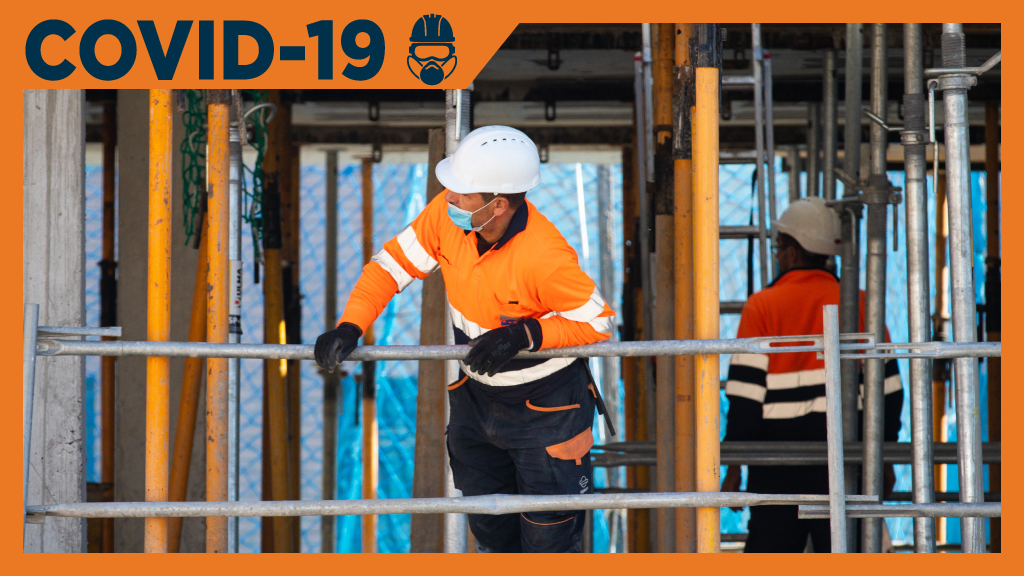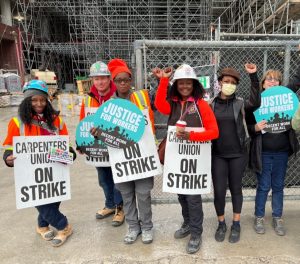January is shaping up to be a critical period in the construction sector’s fight to keep jobsites free from the coronavirus, suggests a building trades health and safety expert.
Carmine Tiano, director for occupational health services for the Provincial Building and Construction Trades Council of Ontario, has released statistics showing the sector is being stricken along with the rest of the province during the second wave of COVID-19 but in his view, construction is for the most part avoiding catastrophe.
The Building Trades council receives reports from its member unions at least weekly and its recent numbers show that between the start of the pandemic in March and Dec. 1, there have been 170 total positive tests among construction workers. But as part of that total, during the second wave, between Nov. 10 and Dec. 1, the number spiked to 70 cases, mostly in the GTA.
“In the last month there may be a little bit of COVID fatigue setting in,” said Tiano. “But in reality, the contractors, the employers, the unions are really trying to keep a handle on it.
“There really hasn’t been that many cases.”
There was one outbreak revealed last week, with EllisDon reporting 15 cases over the course of a few weeks at the Michael Garron Hospital jobsite in Toronto, but beyond that there have not been major outbreaks such as have occurred in warehousing with over 60 cases reported in one location, Tiano noted. That is impressive given the high numbers reported across Ontario during the second wave, he said.
On Jan. 4, when sites open up until the end January, we know there’s going to be a spike potentially,
— Carmine Tiano
Provincial Building and Construction Trades Council of Ontario
“Because we’re at almost 2,000, or under 2000, it’s just expected, the more disease you have in the community, the greater chances are of the spread coming to the workplace. But even then, there hasn’t been any mass outbreaks.
“My understanding is that the trades and contractors and the general contractors are trying to figure it out. I think the best thing to do now, people should wear their masks. Because we know that people wearing masks will stop the spread.”
Crews at the Garron hospital site kept working, EllisDon reported, with workers who tested positive required to self-isolate for 10 days and be cleared by a medical professional before returning to work. Contact tracing was also undertaken.
A Ministry of Labour, Training and Skills Development spokesperson indicated that inspectors visited the site several times in response to the outbreak and as of Dec. 11 the investigation was continuing, though no orders were given.
“They took lots of steps,” said Tiano of EllisDon’s response. “They sent everybody home and they’re vigilant with professional cleaners cleaning it all the time. They’re doing all they can and they’re a good, responsible company.”
Some construction workplaces will soon take a Christmas break, Tiano said, and it is only natural that some workers might be socializing over the holidays and come into contact with the virus, he said, so in January, the whole sector has to step up its guard.
“On Jan. 4, when sites open up until the end January, we know there’s going to be a spike potentially,” he said.
“Now we’re dealing with the end of January. If we look at it in the 30-day cycle, we’re going to get into March then into April, then hopefully if we remain vigilant and more people start getting vaccinated, if we do everything right, that number should be dropping.”
Then, in his timeline, workers will be going from inside work to outside work, and if they remain conscientious the numbers will come down even more, and the vaccinations will continue.
“By June, July, September of next year, which is not really that far away, we should be 75 per cent of whatever the new normal is going to be. The key is, it’s going to be a new normal. We’re never going to get back to the way it was before. No one is going to go back to filthy conditions.”
In the meantime, Tiano said, workplaces have to be careful not to let COVID fatigue combine with COVID relief. That’s when workers get tired of following all the protocols and think that since the vaccine is coming they can relax their guard.
“We’re still going to have to be diligent until enough people are vaccinated, because we’re still going to be shedding virus,” he said.
“So the best thing everybody can do is, number one follow the protocols, wear the masks, sequence your work, sit down with the joint occupational health and safety committees if they exist. Let the safety reps figure it out. If you have to slow down the work a little bit, slow it down.”
Follow the author on Twitter @DonWall_DCN.











Recent Comments
comments for this post are closed